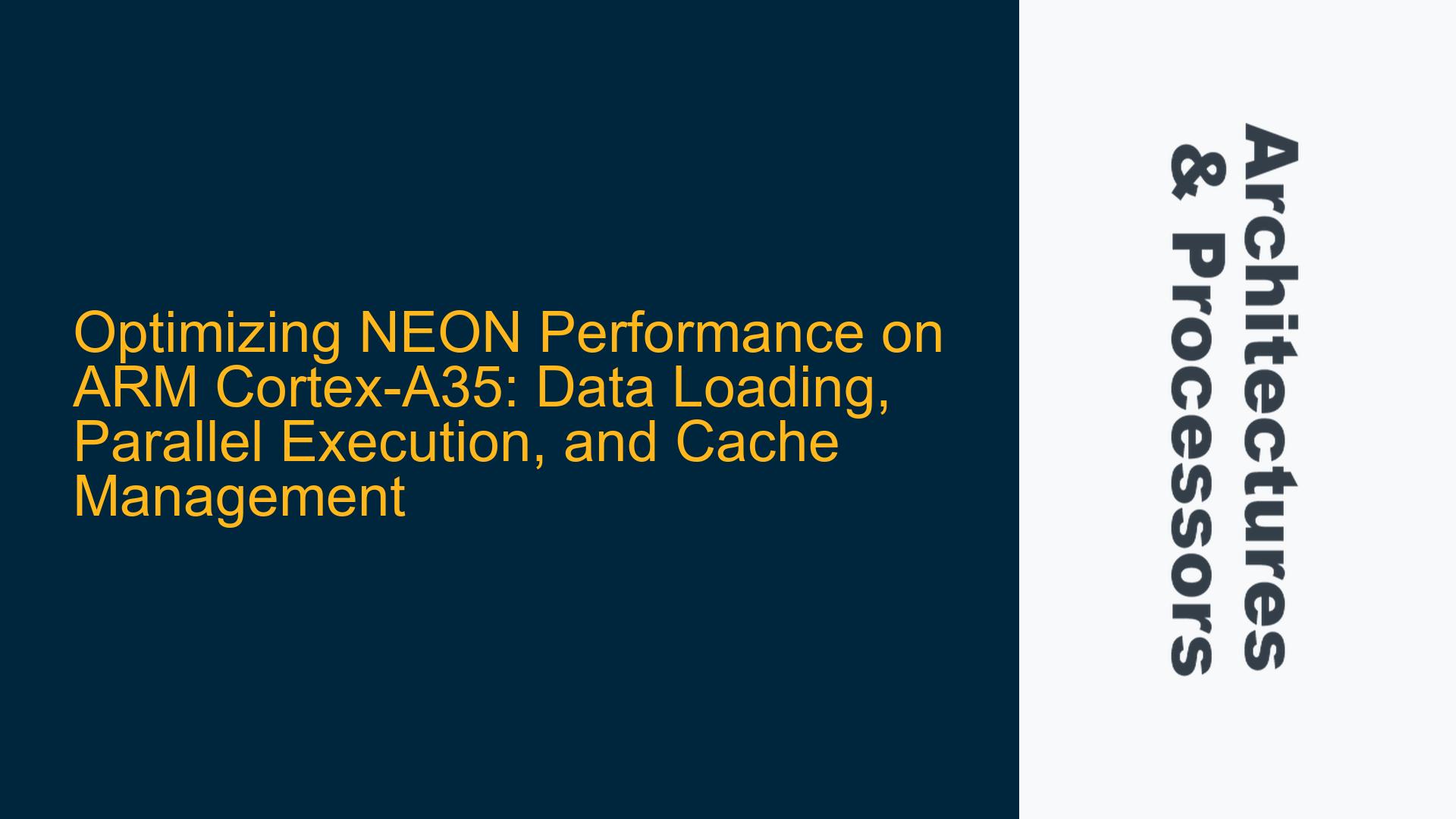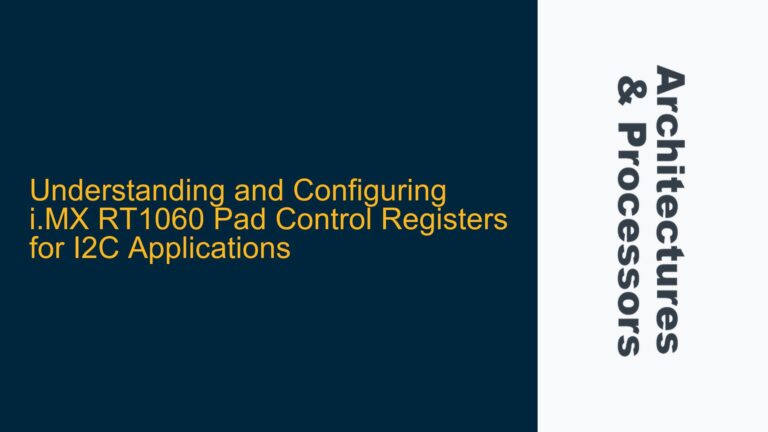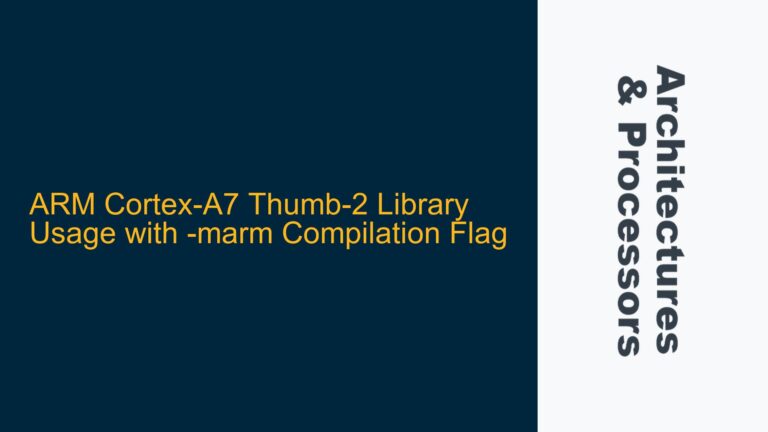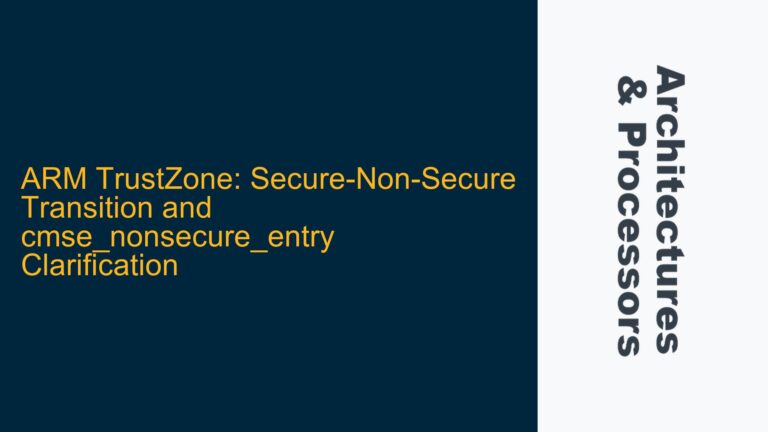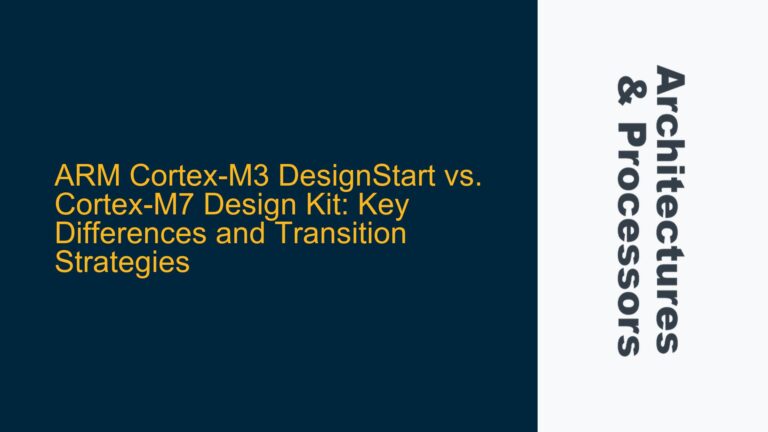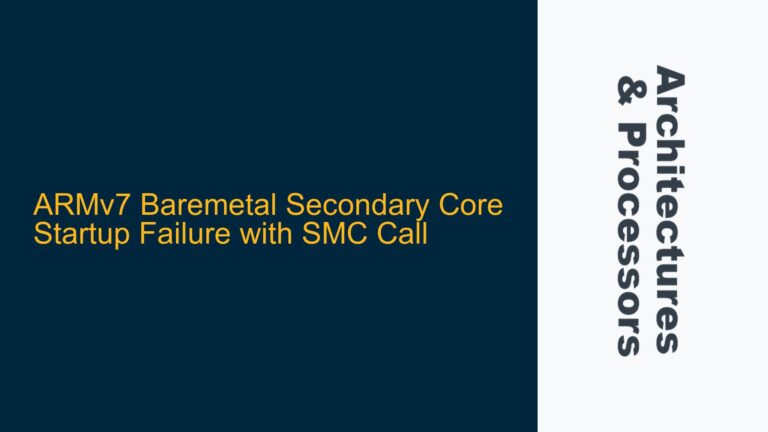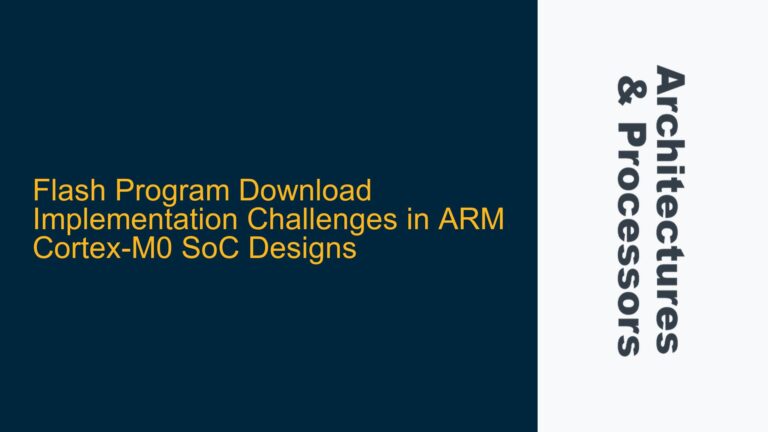NEON Data Loading Strategies for Cortex-A35’s In-Order Execution
The ARM Cortex-A35 is a power-efficient processor with in-order execution, which means instructions are executed in the order they are fetched, without dynamic reordering. This characteristic has significant implications for utilizing the NEON SIMD (Single Instruction, Multiple Data) engine efficiently. NEON is designed to accelerate multimedia and signal processing workloads by processing multiple data elements in parallel. However, in-order execution can lead to pipeline stalls if data is not available when needed, making data loading strategies critical for performance.
To hide data latency, a technique called batch loading can be employed. Batch loading involves prefetching data into NEON registers in large chunks, allowing the processor to overlap memory access with computation. This approach is particularly effective on in-order architectures like the Cortex-A35, where the processor cannot reorder instructions to hide memory latency. For example, if you are processing a large array, you can load multiple elements into NEON registers at once, ensuring that the next set of data is already available when the current computation completes. This reduces the time the processor spends waiting for data, improving overall throughput.
Another consideration is the alignment of data. NEON performs best when data is aligned to 64-byte boundaries, as this allows for efficient cache line utilization. Misaligned data can result in additional memory accesses, increasing latency. Therefore, ensuring that your data structures are aligned properly can significantly enhance performance.
Combining LOAD-STORE Operations and Parallel Execution
Combining LOAD-STORE operations can indeed improve CPU cycles, but the extent of the improvement depends on the specific workload and the Cortex-A35’s microarchitecture. The Cortex-A35 has a dual-issue pipeline, meaning it can execute two instructions per cycle under certain conditions. However, due to its in-order nature, the processor must ensure that dependencies between instructions are respected, which can limit parallelism.
LOAD-STORE operations can be combined using NEON’s interleaved load and store instructions, such as VLD2 and VST2, which load or store multiple registers in a single instruction. These instructions are particularly useful for processing structured data, such as RGB images or complex numbers, where data elements are interleaved in memory. By using interleaved loads and stores, you can reduce the number of instructions executed, thereby improving instruction throughput.
However, it is important to note that combining LOAD-STORE operations does not necessarily mean they will execute in parallel. The Cortex-A35’s in-order pipeline ensures that instructions are executed sequentially, so the processor must wait for a LOAD operation to complete before proceeding with a dependent STORE operation. To maximize parallelism, you should aim to minimize dependencies between LOAD and STORE operations. For example, you can load data for the next iteration of a loop while processing the current iteration, effectively overlapping memory access with computation.
Preloading Data and Cache Management for Consecutive Buffer Access
Preloading data into the cache can be an effective strategy for improving performance, especially when dealing with consecutive buffer accesses. The Cortex-A35 features a multi-level cache hierarchy, including L1 and L2 caches, which are designed to reduce memory latency by storing frequently accessed data closer to the processor.
Preloading data involves using the PLD (Preload Data) instruction to fetch data into the cache before it is needed. This technique is particularly useful for streaming workloads, where data is accessed sequentially. By preloading data, you can ensure that it is available in the cache when needed, reducing the likelihood of cache misses and associated latency.
However, preloading must be used judiciously, as it can also lead to cache pollution if too much data is fetched unnecessarily. Cache pollution occurs when data that is not immediately needed displaces data that is still in use, leading to increased cache misses. To avoid this, you should carefully analyze your data access patterns and preload only the data that is likely to be used in the near future.
Another consideration is cache line utilization. The Cortex-A35’s cache lines are 64 bytes wide, meaning that each cache miss results in a 64-byte transfer from memory. To maximize cache efficiency, you should aim to access data in a way that utilizes the entire cache line. For example, if you are processing an array of 32-bit integers, you should process 16 elements at a time to fully utilize each cache line.
Parallel Execution of ARM and NEON Instructions
The Cortex-A35 supports the parallel execution of ARM and NEON instructions, but this requires careful programming to achieve. The processor’s in-order pipeline means that ARM and NEON instructions are executed sequentially, but you can overlap their execution by interleaving ARM and NEON instructions in your code.
For example, you can use ARM instructions to perform control flow operations, such as loop counters and branch conditions, while using NEON instructions to perform data-parallel computations. This allows the processor to execute ARM and NEON instructions in parallel, effectively utilizing both the scalar and vector units.
To achieve this, you should structure your code to minimize dependencies between ARM and NEON instructions. For example, you can use ARM instructions to load data into registers while using NEON instructions to process previously loaded data. This overlapping of memory access and computation can significantly improve performance, especially in data-intensive workloads.
Another technique is to use NEON intrinsics, which are C/C++ functions that map directly to NEON instructions. Intrinsics allow you to write high-level code that is optimized for NEON, without having to write assembly language. By using intrinsics, you can easily interleave ARM and NEON instructions, ensuring that both units are utilized efficiently.
Implementing Data Synchronization and Cache Coherency
When using NEON for parallel processing, it is essential to ensure data synchronization and cache coherency. The Cortex-A35’s cache coherency mechanism ensures that all cores see a consistent view of memory, but this requires proper use of memory barriers and cache management instructions.
Memory barriers, such as DMB (Data Memory Barrier) and DSB (Data Synchronization Barrier), ensure that memory operations are completed in the correct order. For example, if you are using NEON to process data that is shared between multiple cores, you must use memory barriers to ensure that all cores see the updated data.
Cache management instructions, such as DCACHE (Data Cache Clean and Invalidate), are used to ensure that data in the cache is consistent with data in memory. For example, if you are using NEON to process data that is written to memory by another core, you must invalidate the cache to ensure that the NEON unit sees the updated data.
In summary, optimizing NEON performance on the Cortex-A35 requires a deep understanding of the processor’s in-order execution pipeline, cache hierarchy, and parallel execution capabilities. By employing techniques such as batch loading, interleaved LOAD-STORE operations, preloading, and parallel execution of ARM and NEON instructions, you can significantly improve the performance of your applications. Additionally, proper use of memory barriers and cache management instructions is essential for ensuring data synchronization and cache coherency in multi-core environments.
